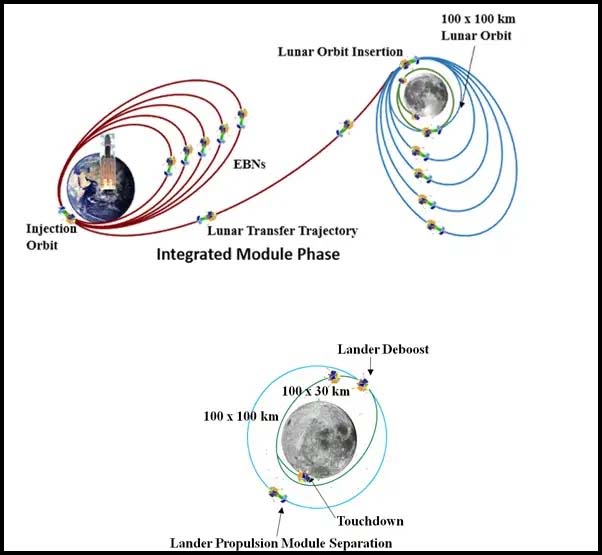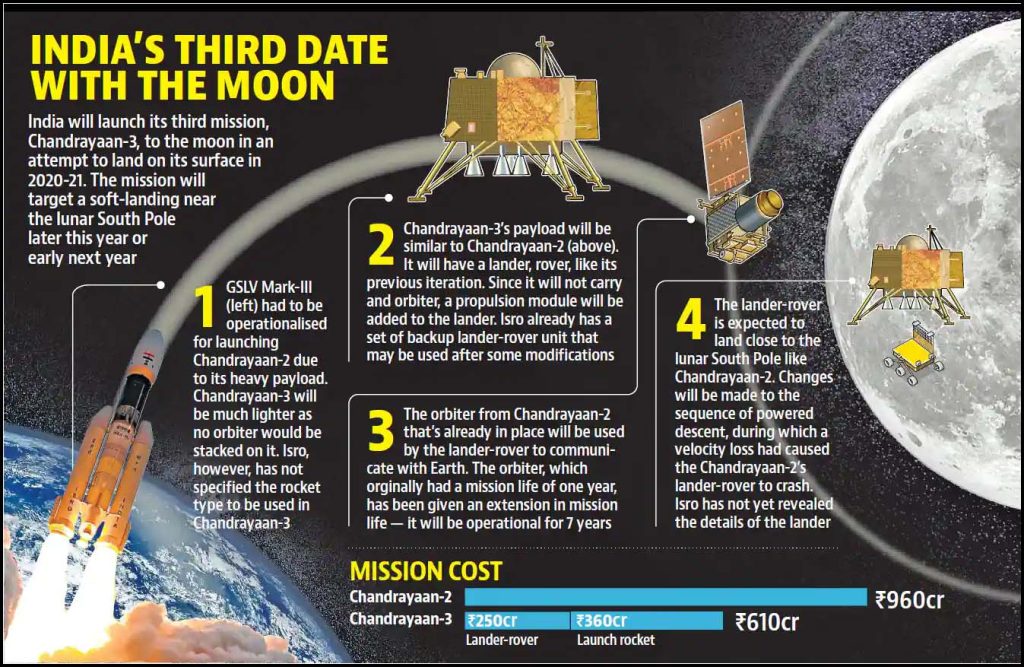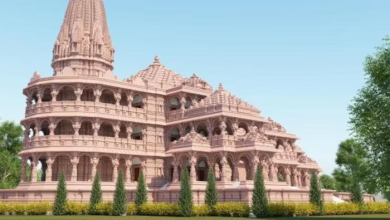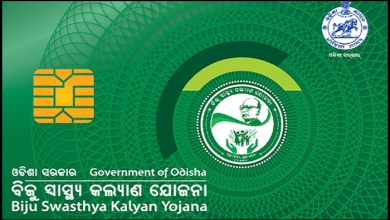Chandrayaan-3: India’s Moon South Pole Soft Landing Mission in 2023
After Chandrayaan-2, Chandrayaan-3 is India’s third lunar mission with the objective of achieving a gentle landing on the lunar surface and deploying a rover. India’s Chandrayaan-3 mission intends to demonstrate its abilities in landing and investigating the Moon’s South Pole, an area noted for the presence of water molecules.
Launch and Landing:
- On July 14, 2023, Chandrayaan-3 was successfully launched using the Launch Vehicle Mark-III (LVM3) from the Satish Dhawan Space Center in Sriharikota, Andhra Pradesh.
- A lander, a rover, and a propulsion module make up the spacecraft; they weigh a combined 3,900 kg.
- The lunar lander Vikram is supported by the GSLV Mark 3 heavy-lift launch vehicle, sometimes referred to as the Bahubali rocket.
- On August 23, the spacecraft is expected to land in the Moon’s South Pole after traveling for more than 40 days.

Objective:
Three key goals of the Chandrayaan-3 mission are as follows:
- Safe and Soft Landing: The main goal of Chandrayaan-3 is to ensure that the lander lands on the lunar surface safely and gently. This mission attempts to safely and trouble-free land the lander module on the lunar surface after learning from the failure of the previous mission.
- Chandrayaan-3’s goal is to showcase the rover’s capabilities by using its prowess for exploration and roving the lunar surface. After the lander has successfully landed, the rover will be released and will conduct a number of scientific investigations and observations.
- Scientific Experiments and In-Site Observations: The mission aims to carry out scientific experiments and in-site observations to better comprehend the makeup of the Moon. This entails investigating the soil, water, and other resources present on the lunar surface, as well as the chemical and natural constituents. These observations will advance our understanding of the Moon’s composition and shed light on the Moon’s past and present.
Design:

- 1. The propulsion module is in charge of delivering the lander and rover configuration to the 100-kilometer lunar orbit. It is a box-like structure that serves as the lander’s mounting framework. It has a sizable solar panel and an intermodular adapter cone. The SHAPE payload, which investigates spectral and polarimetric observations of Earth from the lunar orbit, is also carried by the spacecraft.
- 2. Lander: The lander module is intended to make a soft lunar surface landing. It has four landing thrusters and four landing legs on a box-shaped frame. The rover and several scientific tools for on-site analysis are carried by the lander. Compared to its predecessor, it has undergone advancements in terms of structural rigidity, impact leg strength, and instrumentation redundancy.
Three payloads are carried by the lander:

- The lunar surface’s thermal conductivity and temperature are measured by Chandra’s Surface Thermophysical Experiment (ChaSTE).
- Measures seismic activity at the landing site using the Instrument for Lunar Seismic Activity (ILSA).
- Estimates plasma density and its fluctuations using the Langmuir Probe (LP).
3. Six-wheeled Chandrayaan-3 rover: This craft weighs 26 kg and has six wheels. It has a drill and a variety of scientific tools, including as cameras and spectrometers. The lander and the ground control team in India can be reached by the rover’s 500-meter communication range. It should live for one lunar day, which is equal to 14 days on Earth.
The rover’s goals include making important scientific discoveries about the Moon’s composition, the history of lunar impacts, the occurrence of water ice in the soil, and the evolution of the atmosphere.
Modifications and Precautions:
- Compared to Chandrayaan-2, Chandrayaan-3 has received modifications by ISRO to increase reliability.
- To guarantee a successful landing and maintain its intended course to the lunar surface, the lander Vikram has been updated and is equipped with more fuel.
- To maximize the odds of the mission’s success, the craft has undergone extensive testing and includes a number of safety features.
Mission Components:
- The Propulsion module, Lander module, and Rover module make up the 3,900 kilogram Chandrayaan-3 spacecraft.
- Vikram, the lander, and Pragyaan, the rover are comparable to their Chandrayaan-2 counterparts but have undergone improvements to increase reliability.
- The mission has a 615 crore rupee budget.
Humbly Request To All Visitors!
If you found above both downloading link expired or broken then please must inform admin by fill this Contact Us! Form


